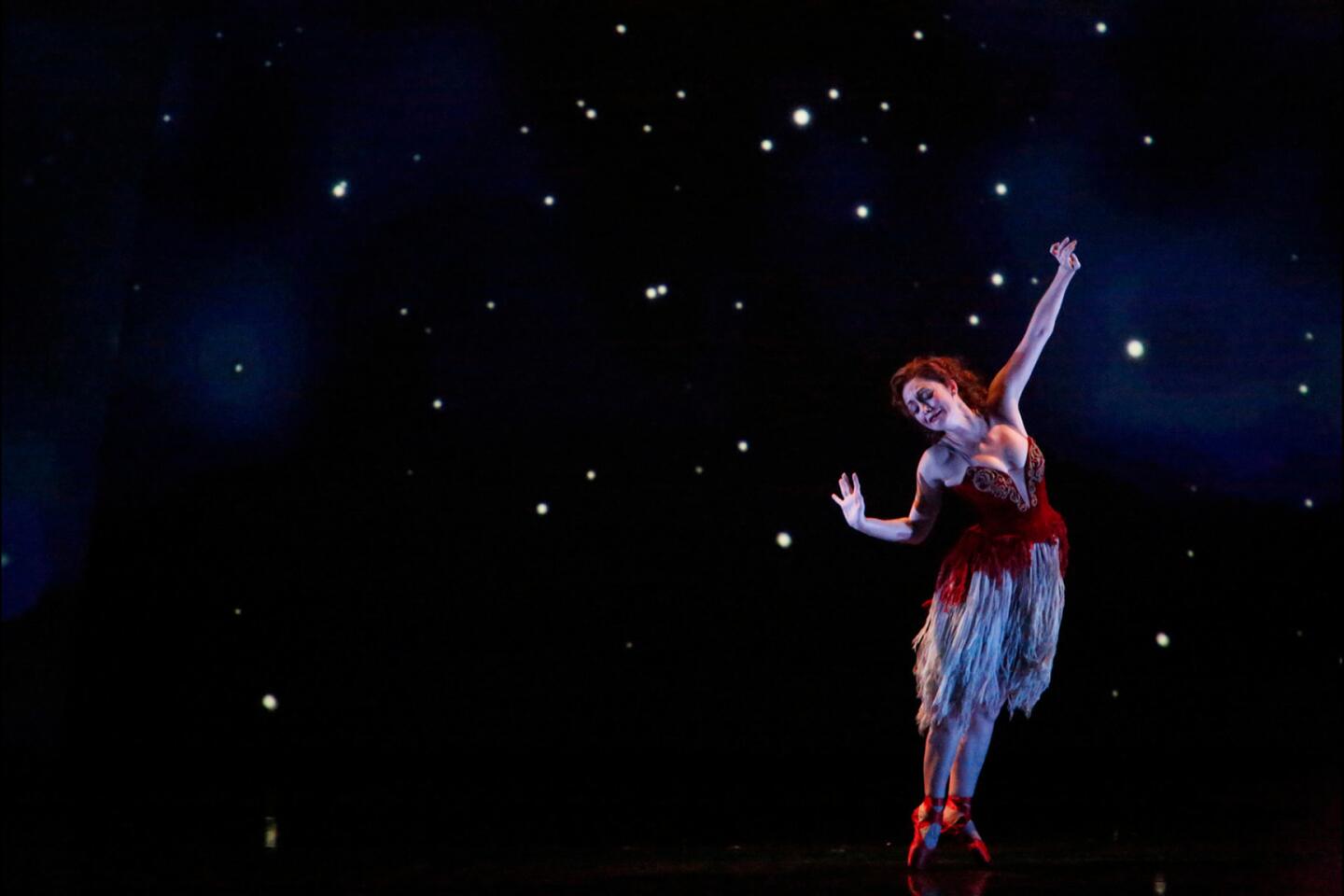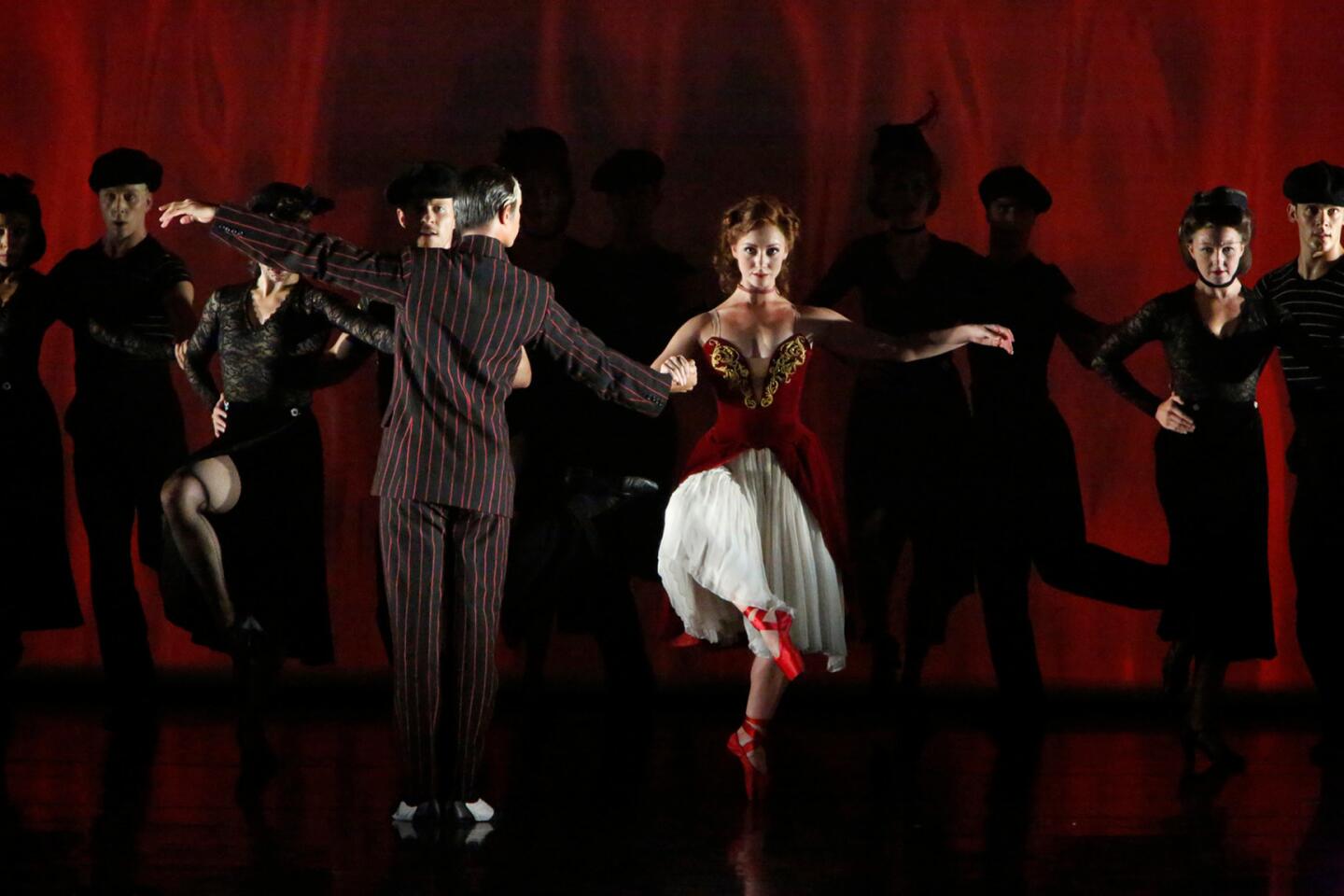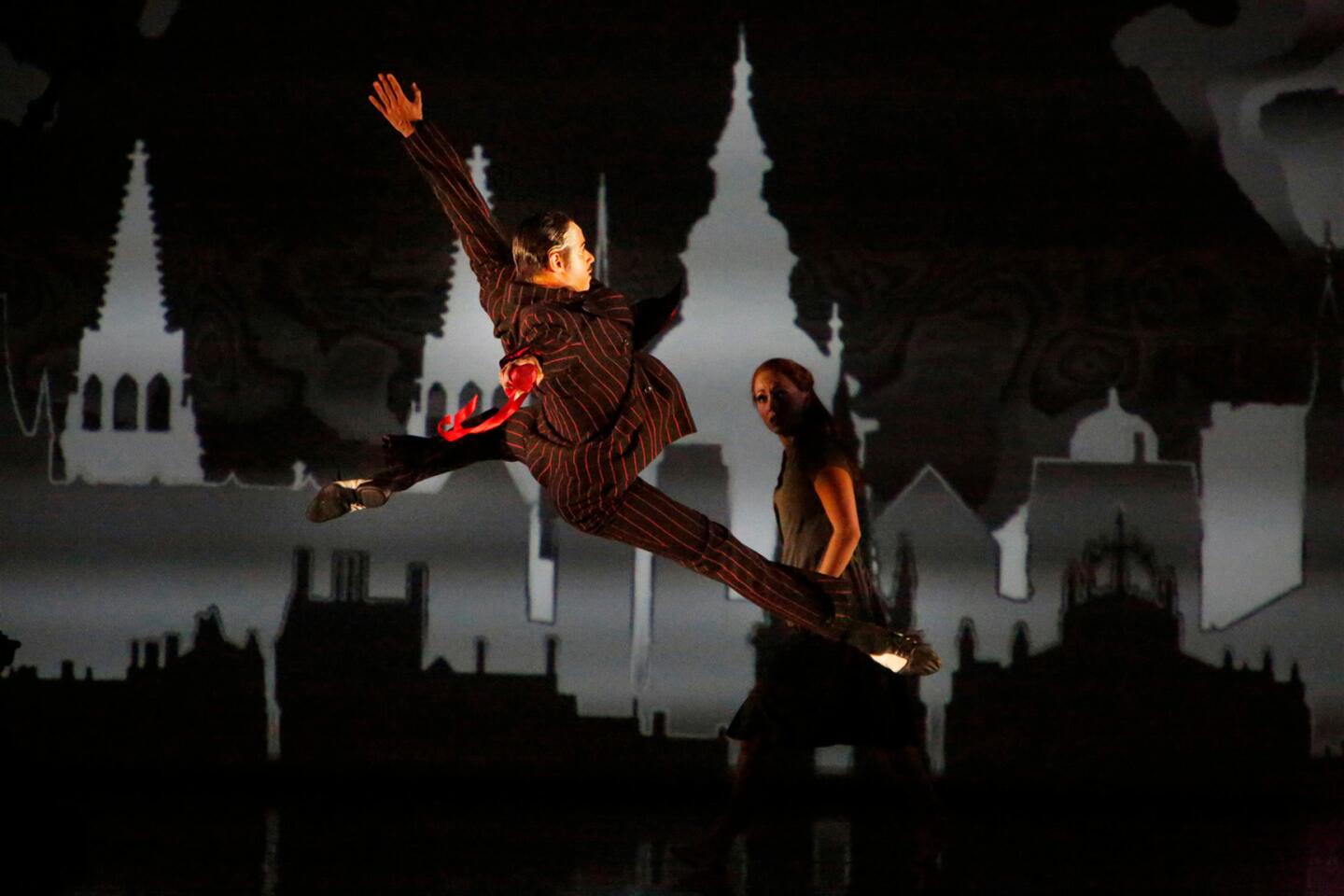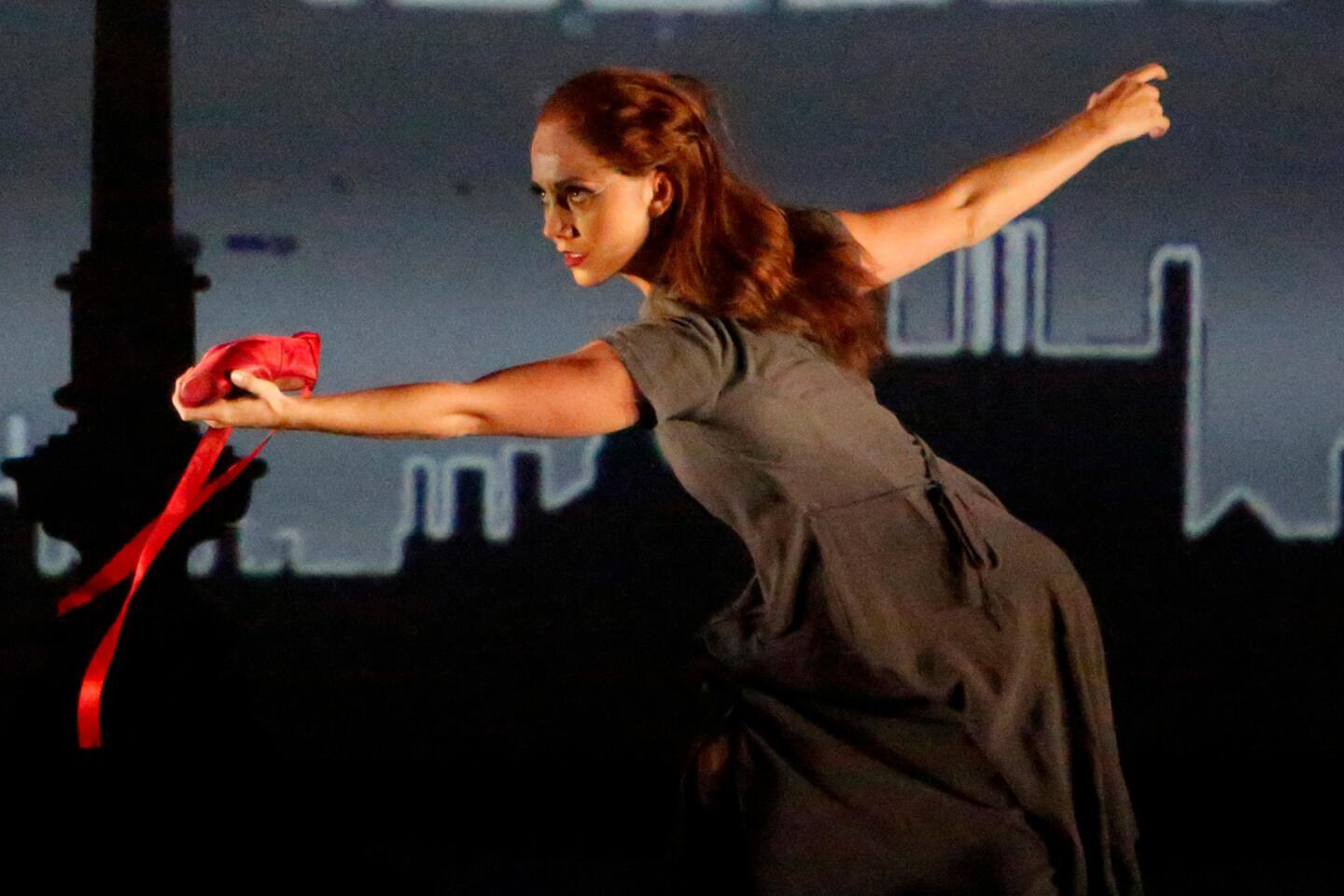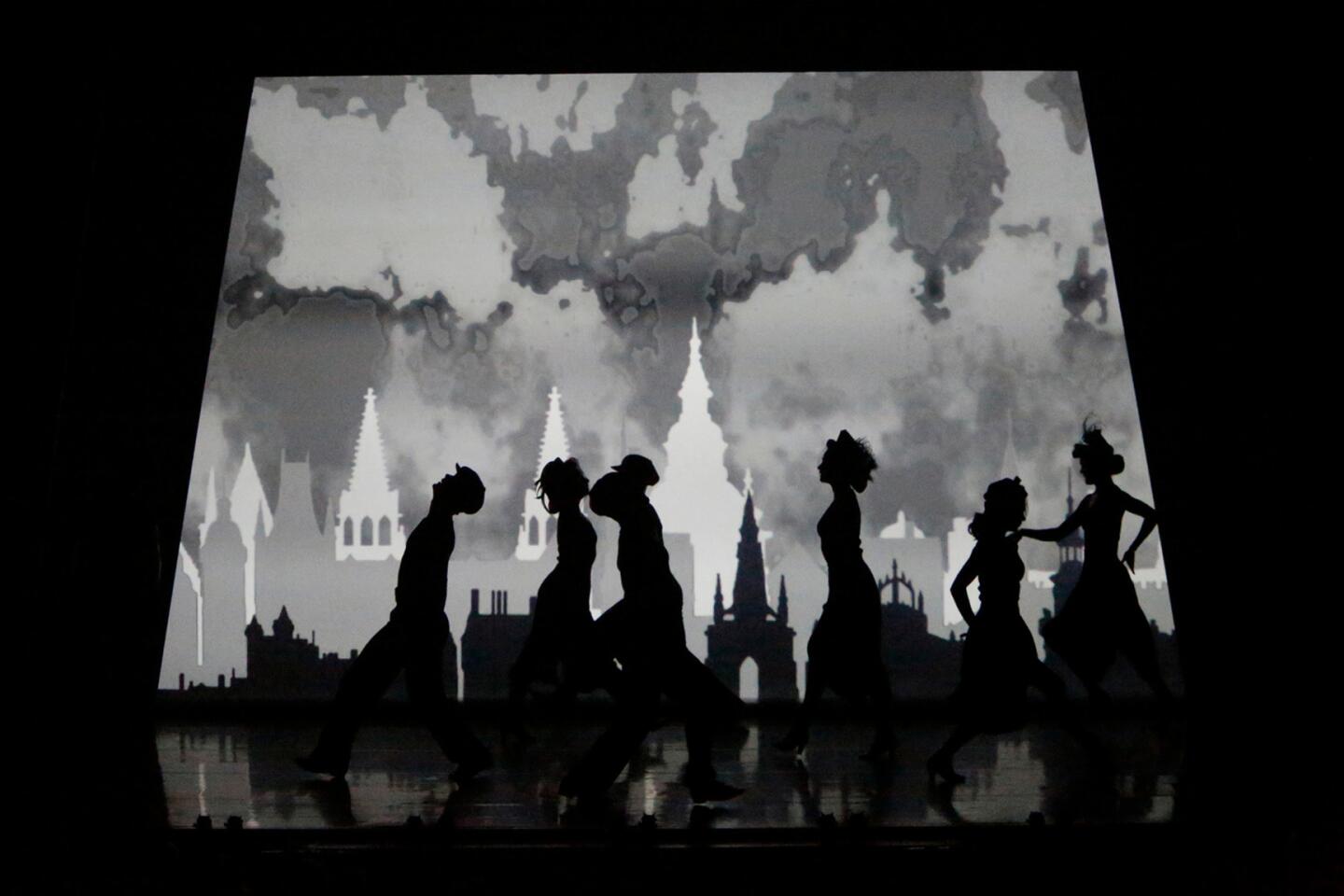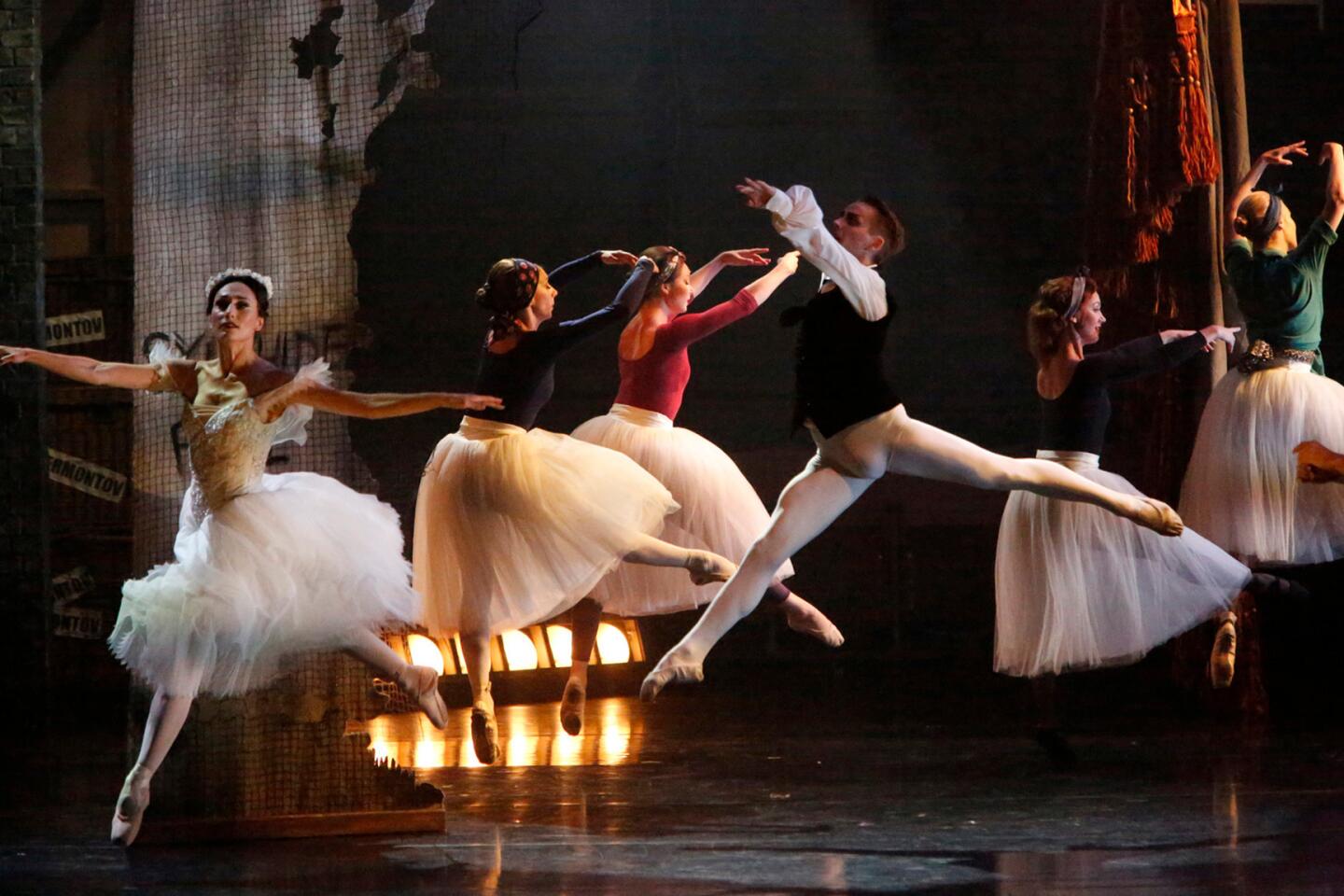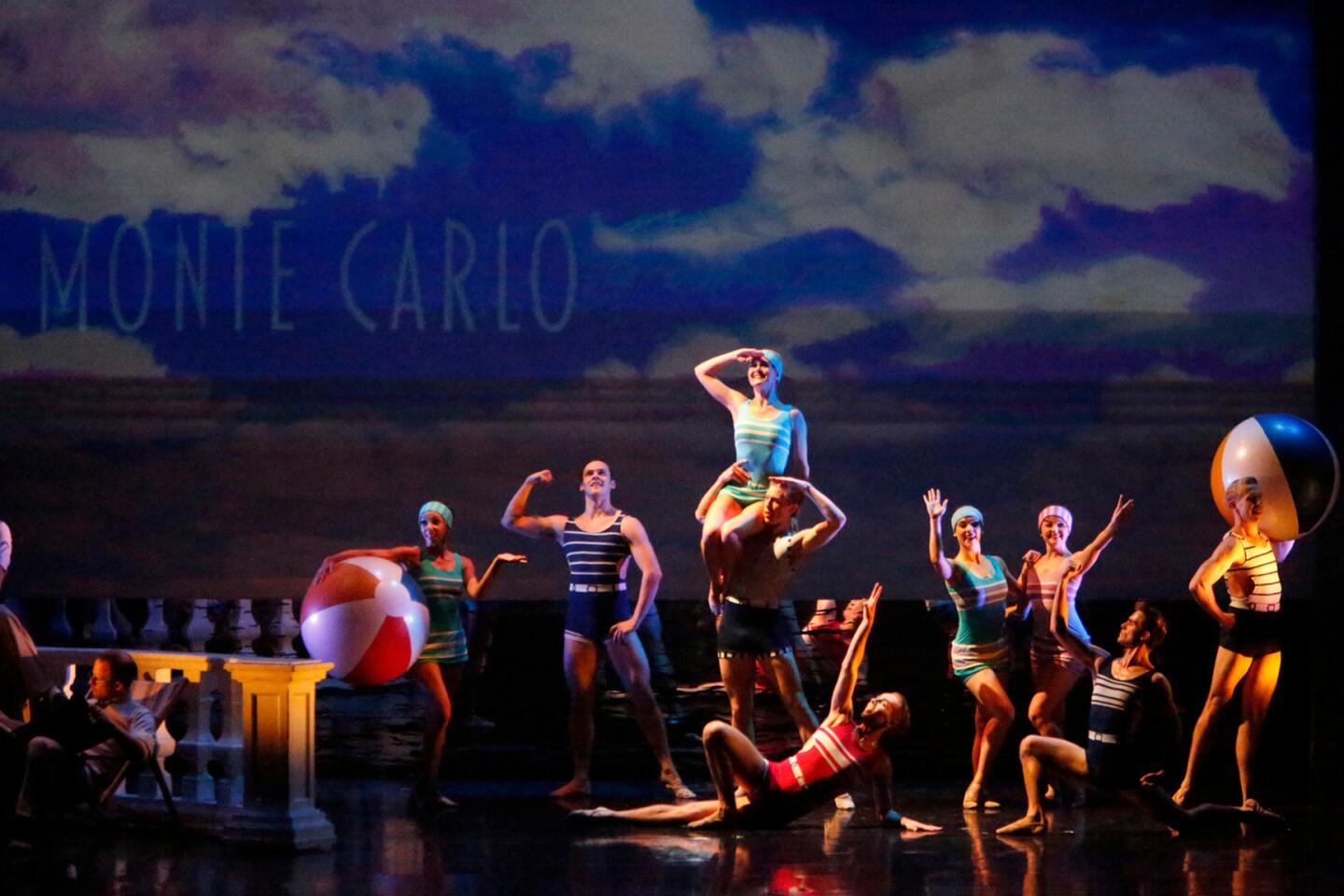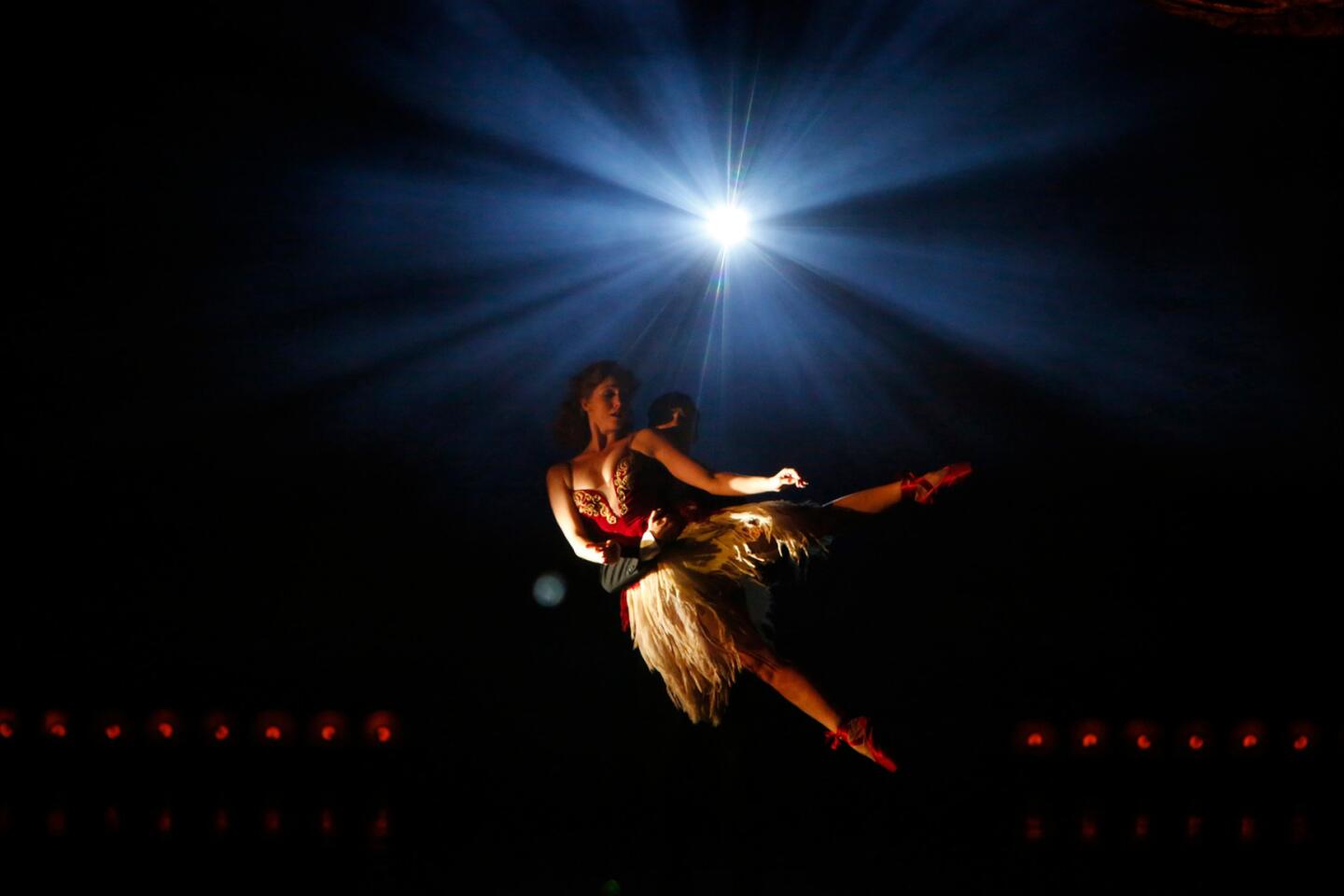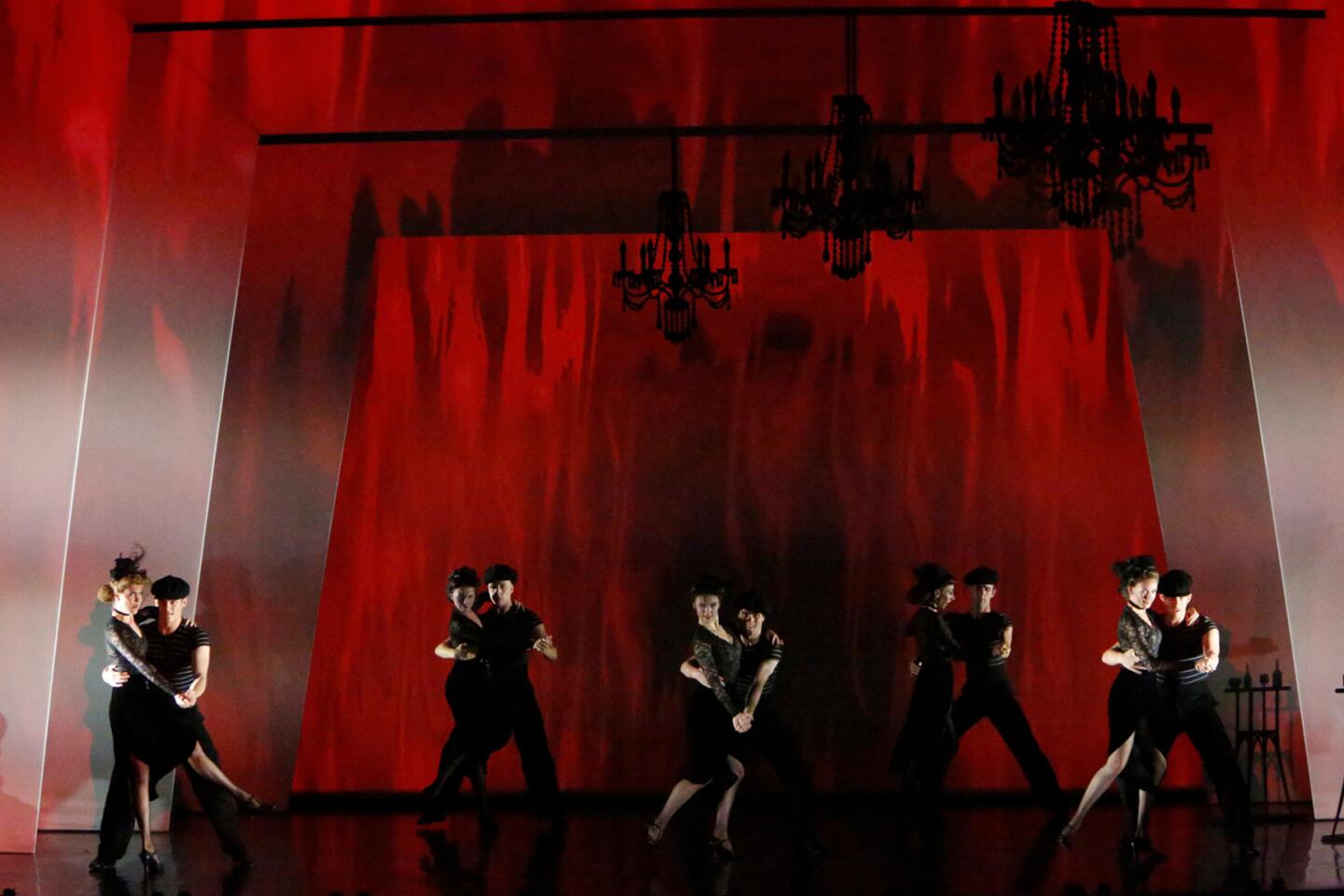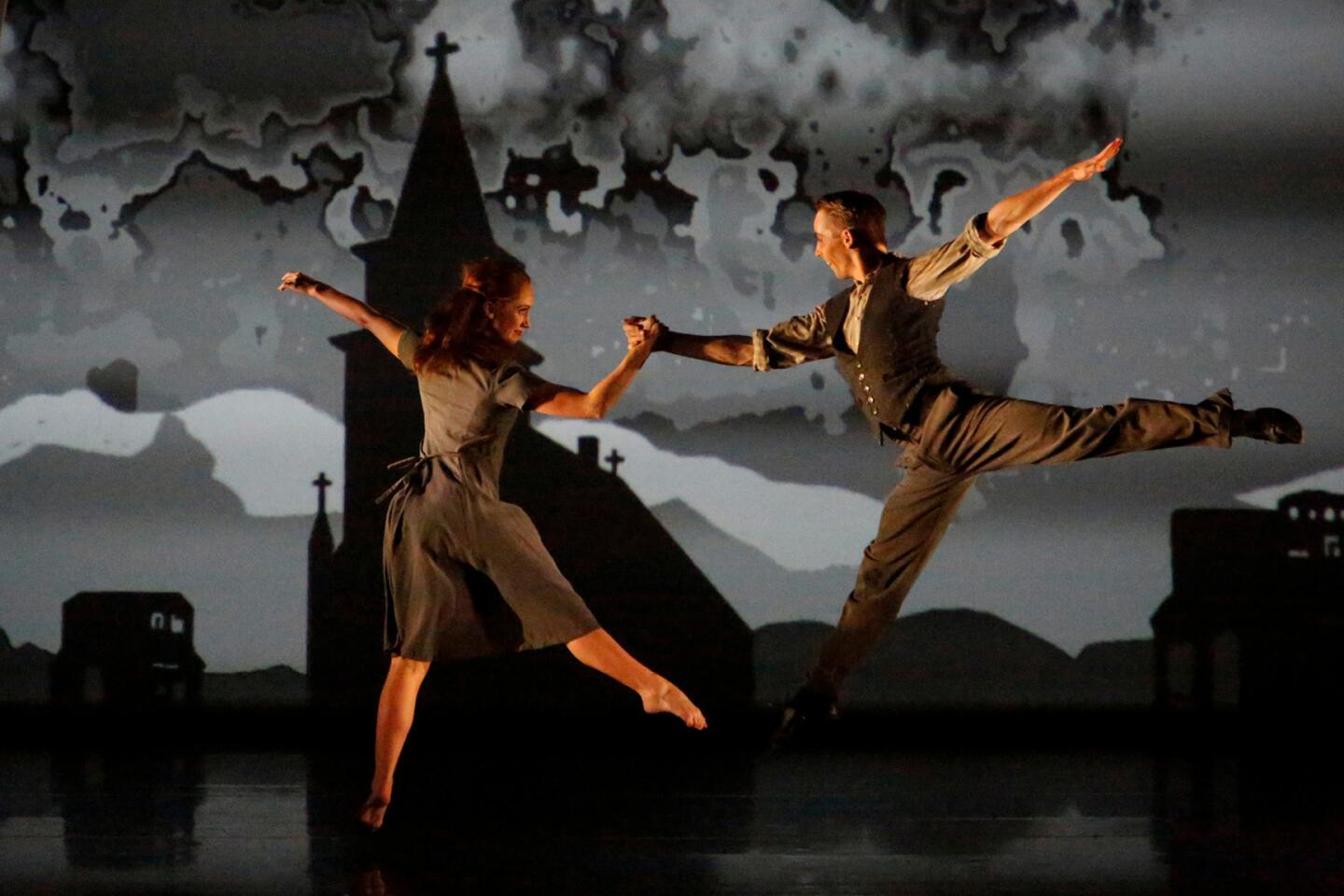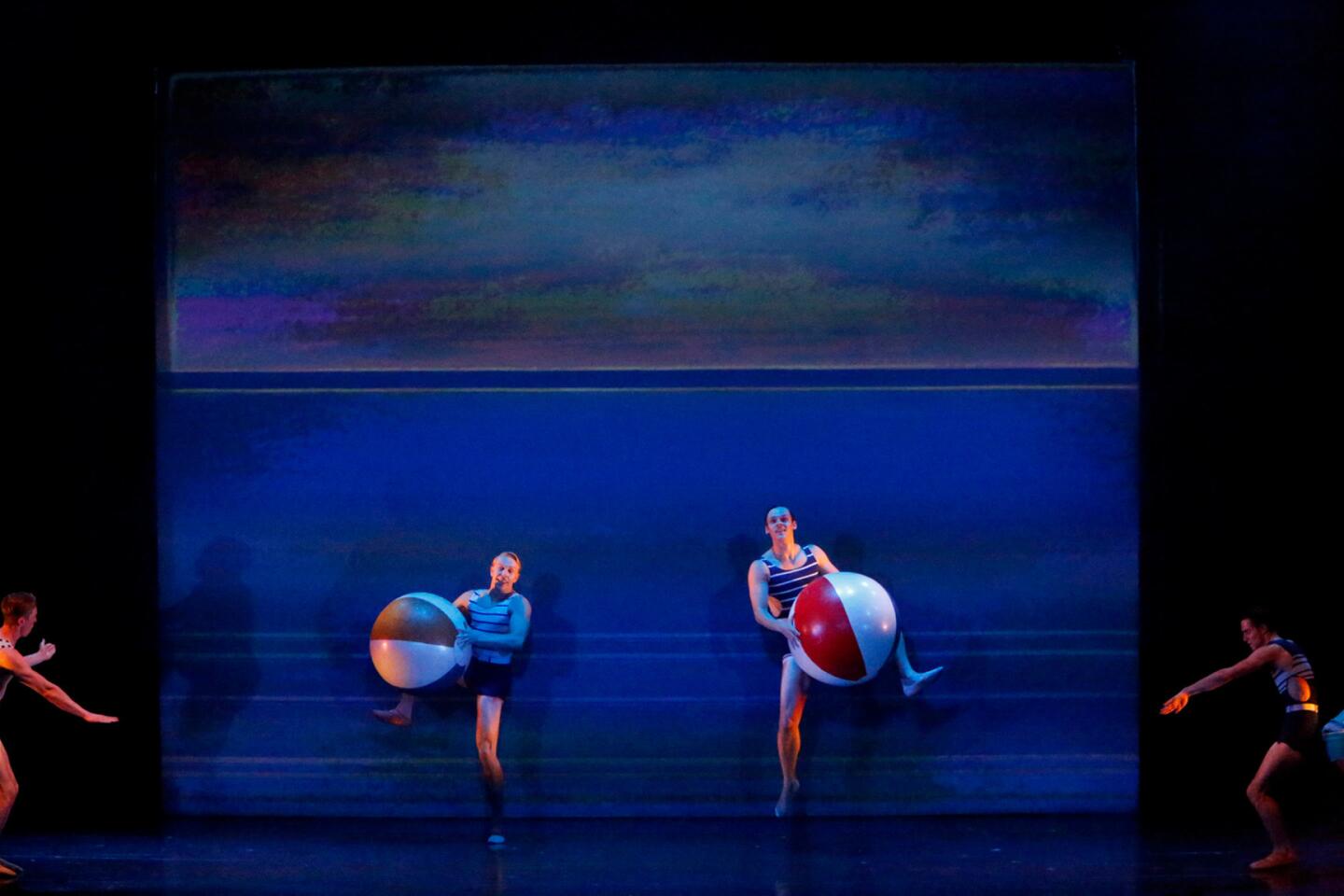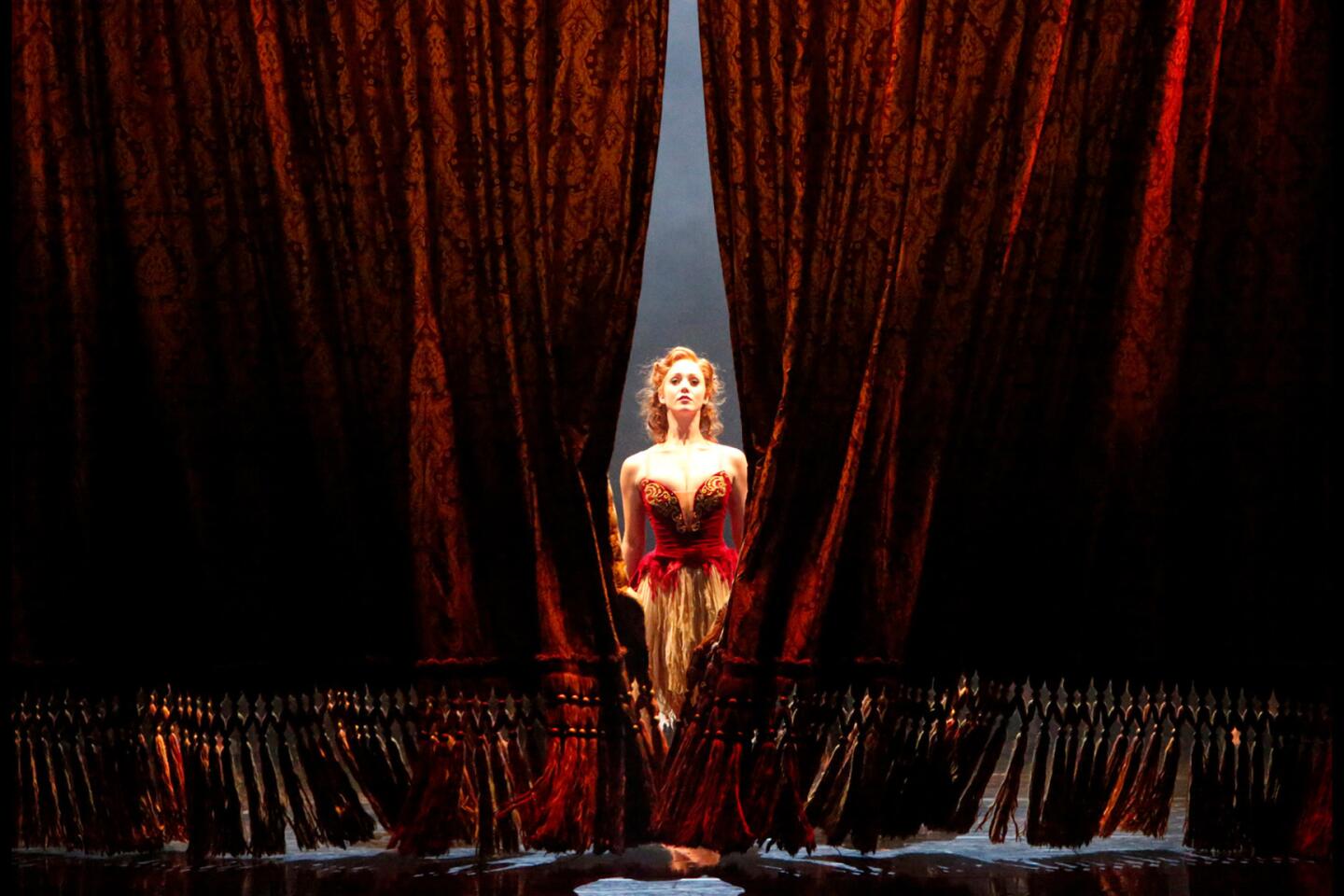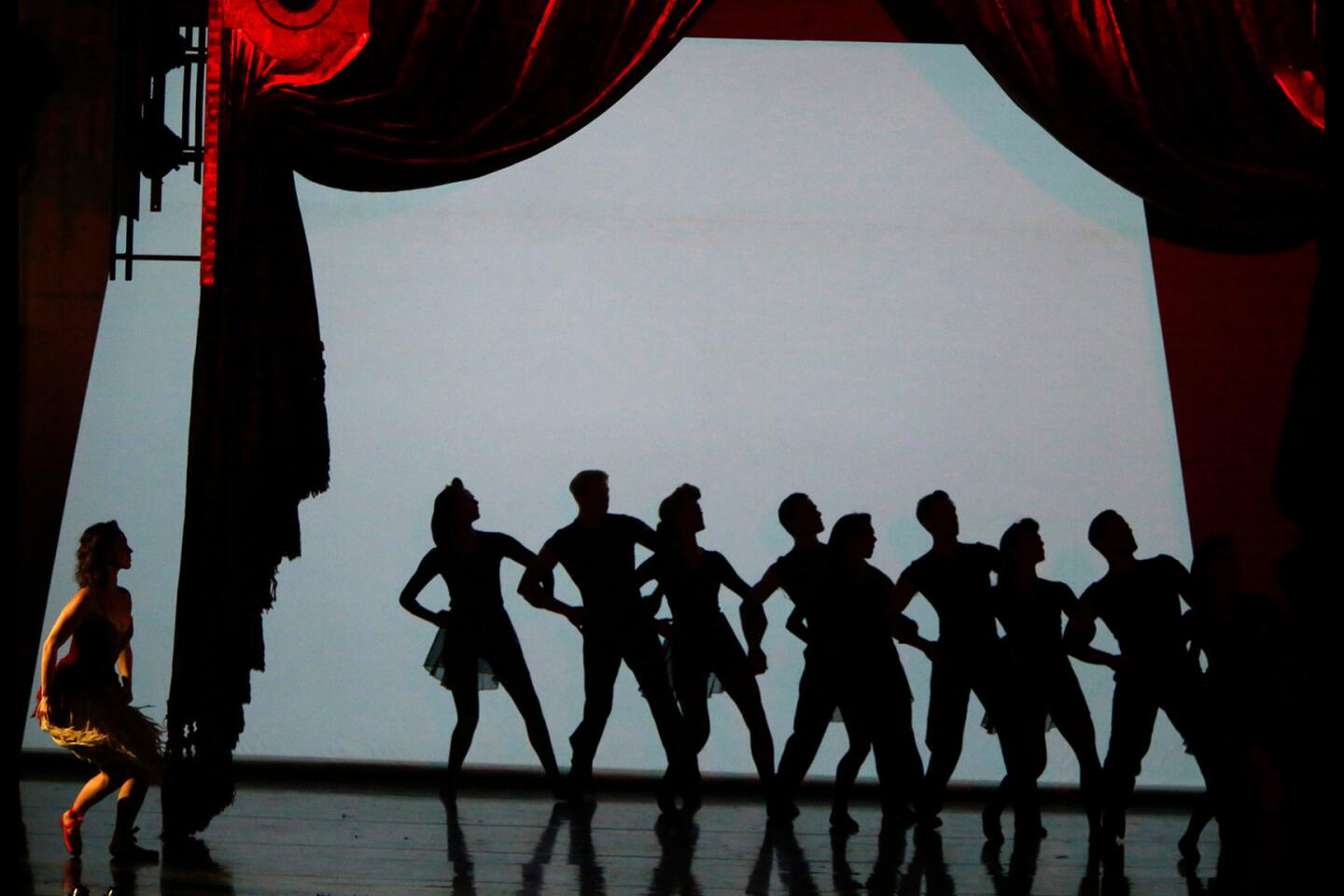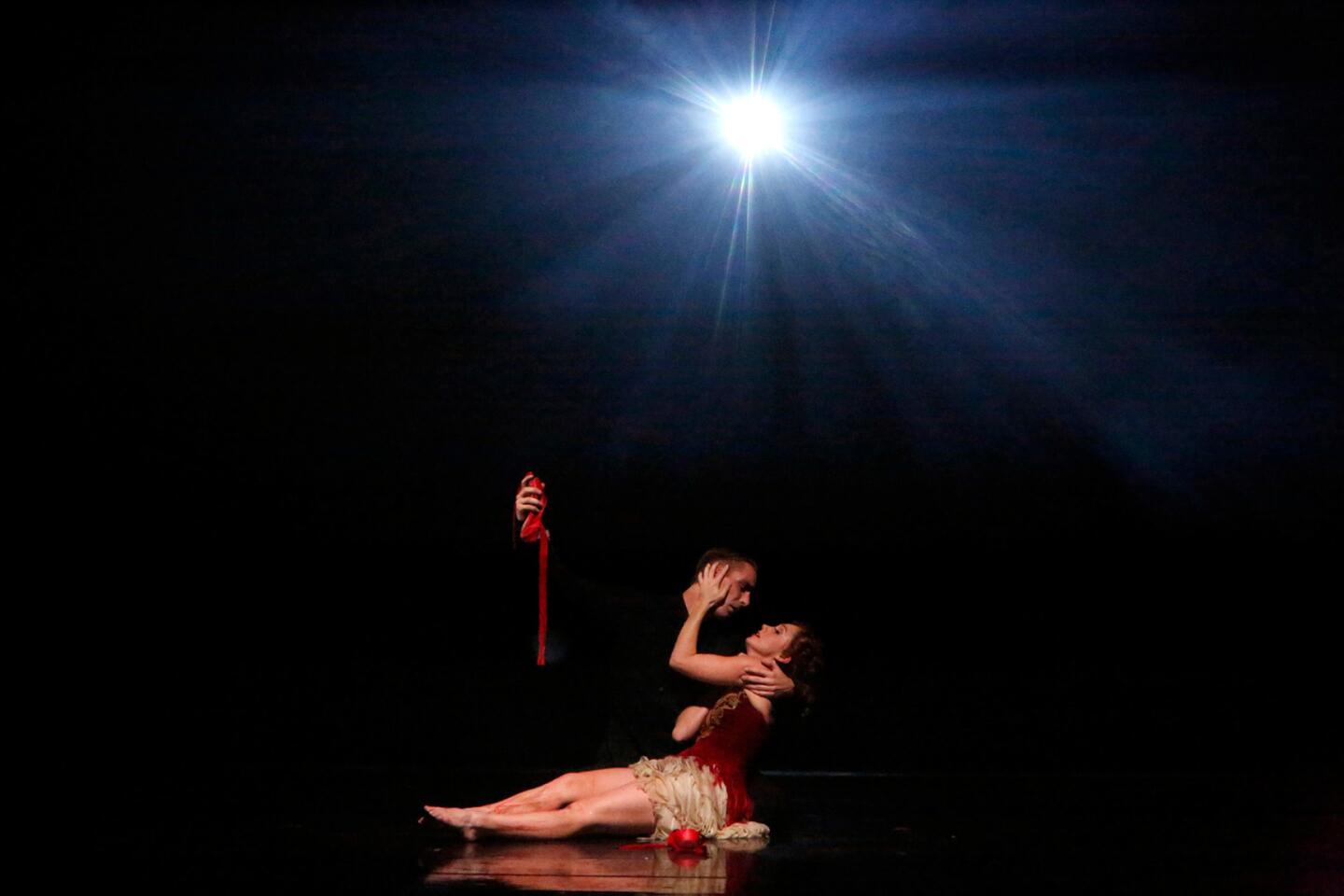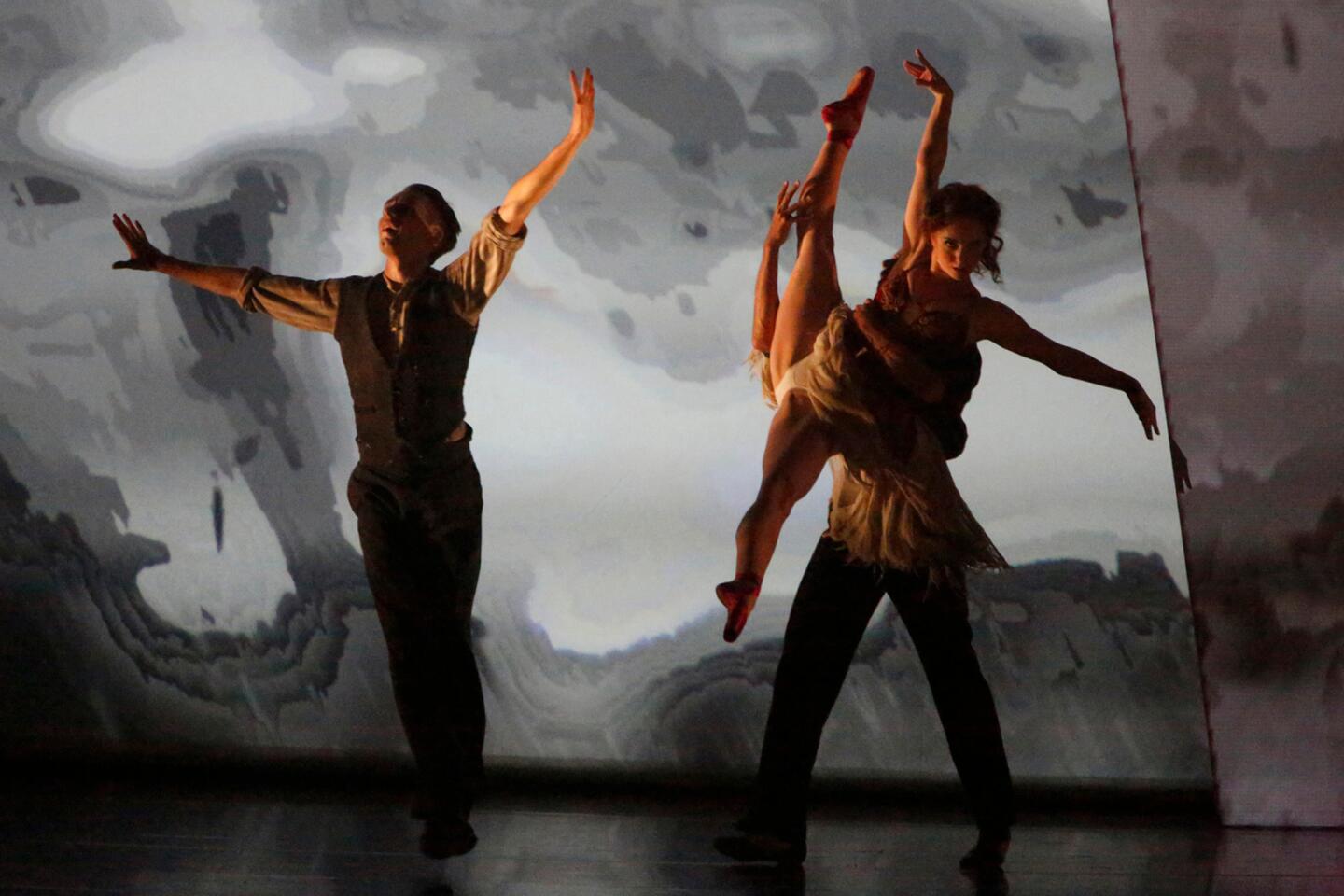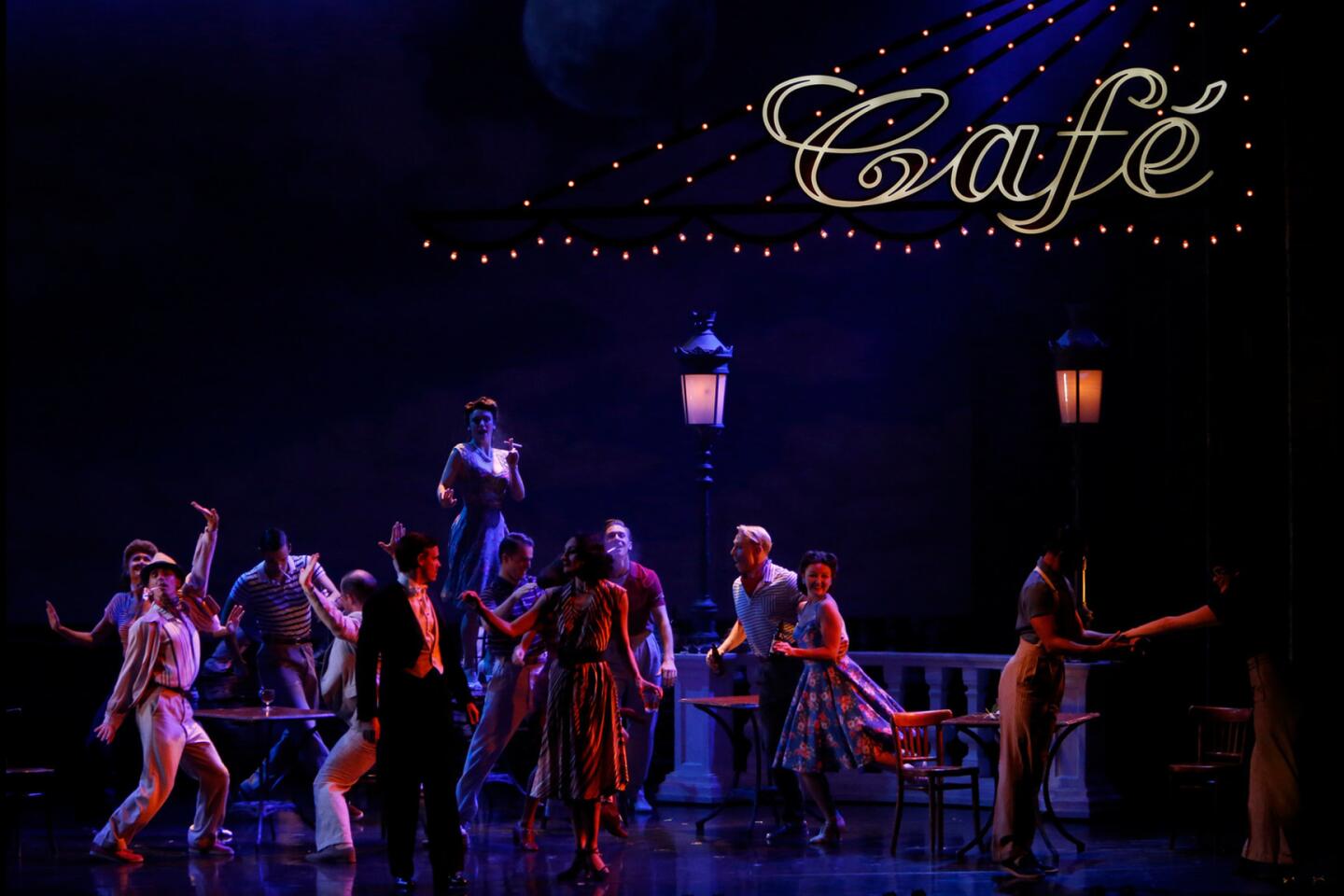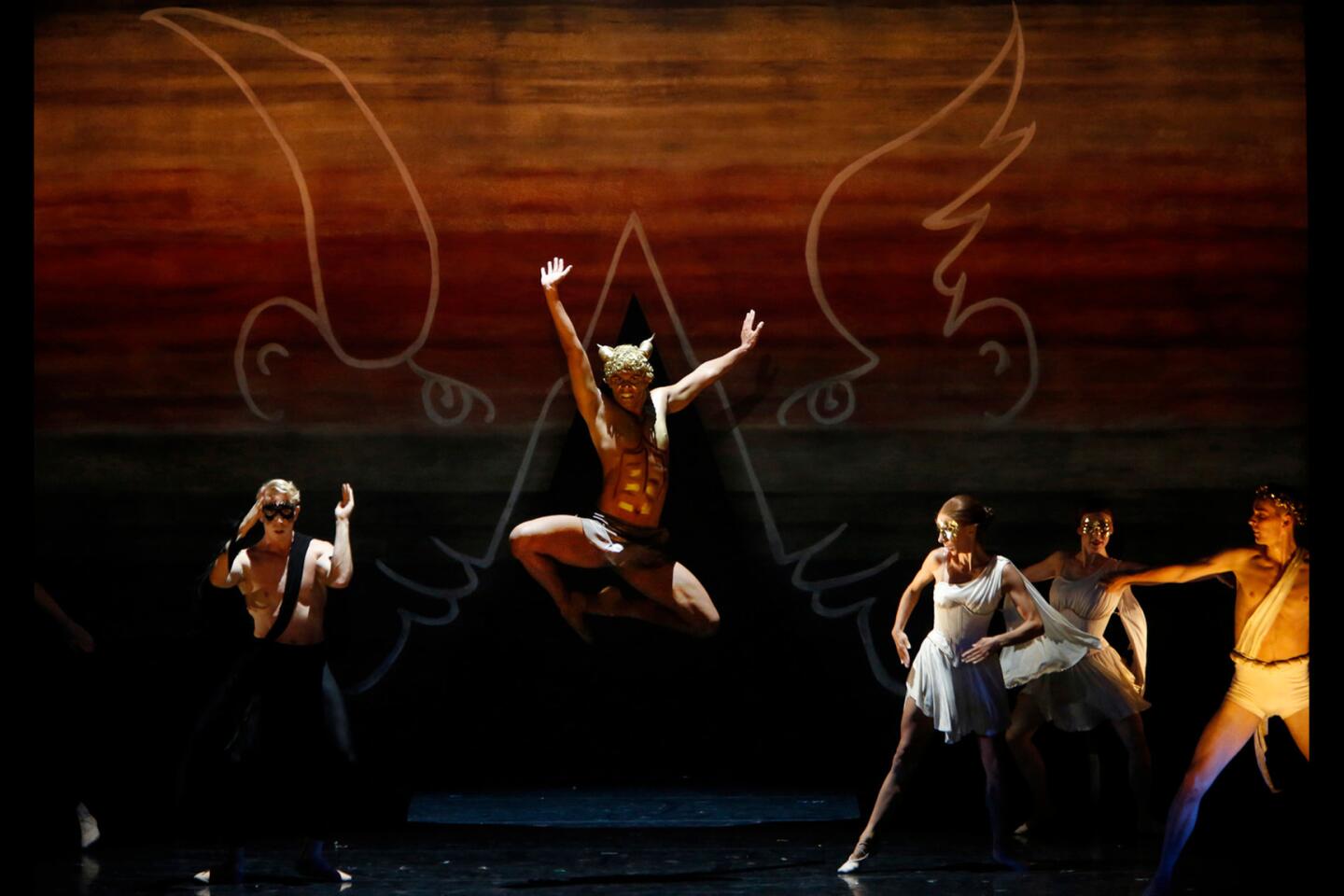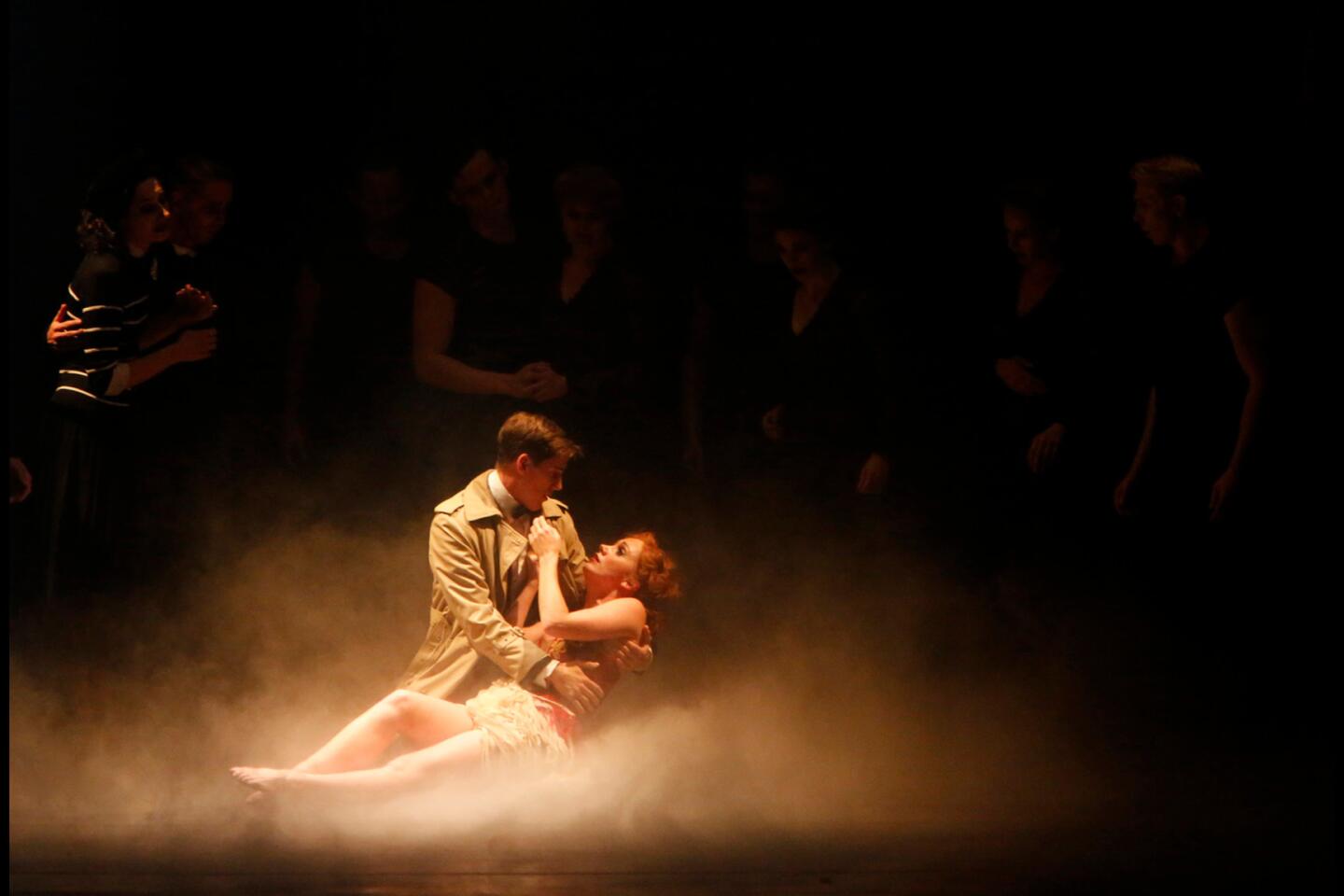Review: Demons, on the feet and in the soul, in Matthew Bourne’s ‘The Red Shoes’

Choreographer Matthew Bourne presents the American premiere of “The Red Shoes,” dance theater adapted from the classic film of the same name.
- Share via
The beloved 1948 film “The Red Shoes” wasn’t the first or last to portray ballet dancing as a fatal obsession, but it remains the most indelible. Celebrated choreographer and director Matthew Bourne has adapted that movie into a full-evening dance drama, and its American premiere Tuesday night at the Ahmanson Theatre proved most successful when it lightly, deftly invoked the original plot and characters while creating its own postwar European dance world.
Using Terry Davies’ orchestrations of vintage Bernard Herrmann film scores, Bourne creates a cornucopia of reinvented period dances: not merely the backdated 1940s glamour ballet (including a memorable rehearsal scene of “Les Sylphides,” with music by Chopin briefly supplanting Herrmann), but also snooty high-society pavans, ghastly show-dance routines and a suite of pop dances for young people frolicking on the Mediterranean coast.
Nobody since Frederick Ashton reveals social class and character traits more acutely than Bourne in such sequences. And though this project requires more pointe choreography than he usually undertakes, Bourne makes what might be called the extraneous or diversionary dances into his secret weapon — the highlights of the evening.
The major “Red Shoes” ballet represents a special case, retelling the Hans Christian Andersen fairy tale about magic slippers that keep their wearer dancing until she dies but also reinforcing the offstage battle for the ballerina’s body and soul.
Up to that point, the set design by Lez Brotherston emphasizes a wondrous fluidity but also spatial constriction — the world of the stage, dominated by central proscenium arches. Those arches pivot, so we get the view of the audience for the show-within-a-show, then, unexpectedly, we get the backstage view, which reinforces the sense of a hothouse world with secrets and relationships that the audience might not otherwise suspect.
Suddenly that world expands to fill the Ahmanson with panoramic vistas, moving projections and dancing by the full company. In the original film this ballet teemed with lavish Technicolor surrealism, but here the palette stays monochromatic except for the doomed heroine and her shoes. What’s more, although Bourne’s company, New Adventures, lists 26 members, the constant costume changes suggest an ensemble four times that size.
Indeed, the wow-factor gets pretty overwhelming with projected windscapes, starscapes and other effects designed by Duncan McLean enhancing the ordeals imposed by those demonic slippers.
Unfortunately, the key narrative components of Bourne’s “Red Shoes” don’t always match the high achievement of the dances and production values. As in the original film by Michael Powell and Emeric Pressburger, we watch the enigmatic ballet impresario Boris Lermontov mold Victoria Page into a star ballerina while a young composer, Julian Craster, offers her his love. Bourne is most persuasive with Craster, giving him an impassioned solo early on that Dominic North managed to make both virtuosic and quasi-improvisational on Tuesday. But Lermontov’s inner demons prove less compelling, even with Sam Archer’s heroic attacks. And despite Ashley Shaw’s faultless and often fearless dancing, we never really learn who Victoria Page is.
A feminist choreographer might bring a new perspective to the story of a woman crushed between two domineering males, but Bourne has nothing but theatrical flair to mask expressive emptiness in his rapid-fire buildup to the violent denouement. In his “Swan Lake,” “Cinderella,” “The Car Man” and other works, he created characters who broke our hearts. But not here.
Indeed, his one-and-only Page-Craster love duet is the weakest choreography of the evening: a lift-laden showpiece with no real feeling beyond what Shaw and North can deliver. Far better is their falling-apart duet a few scenes later, but by then it’s too late. If they don’t make a case for true love and if Lermontov can’t embody the primacy of art, then the personal and thematic conflict of “The Red Shoes” becomes eclipsed by its diversionary delights.
On Tuesday, those delights included the fictional Ballet Lermontov’s reigning stars: Michela Meazza as the volatile “Sylphides” prima, Liam Mower as the flamboyant lead danseur and, especially, Glenn Graham as the harried ballet master and character specialist. (Alternating company members are scheduled to assume many of the roles, so the leads seen Tuesday may not reappear at any given performance as the national tour continues through Oct. 1 in Los Angeles, followed by stops at the Kennedy Center in Washington, D.C.; Blumenthal Performing Arts in Charlotte, N.C.; and New York City Center.)
If sometimes there’s a sense that this “Red Shoes” is veering awfully close to Les Ballets Trockadero, the all-male comic dance troupe, that’s not necessarily a criticism. Unmasking the overinflated cult of ballet can be a public service, and nobody does it with more wit and insight than Bourne. But you can argue that Powell and Pressburger passionately embraced that cult, leaving Bourne at cross-purposes with his source. The result is resplendent in all sorts of ways, but not as a look at Victoria Page’s needs, ambitions and tragic sacrifice.
♦ ♦ ♦ ♦ ♦ ♦ ♦ ♦ ♦
‘The Red Shoes’
Where: Ahmanson Theatre, 135 N. Grand Ave., L.A.
When: 8 p.m. Tuesdays-Fridays, 2 and 8 p.m. Saturdays, 1 and 6:30 p.m. Sundays; ends Oct. 1 (call for exceptions)
Tickets: $30-$165 (subject to change)
Info: (213) 972-4400, www.centertheatregroup.org
SIGN UP for the free Essential Arts & Culture newsletter »
Support coverage of the arts. Share this article.
MORE NEWS AND REVIEWS
Our weekly calendar: Dance in L.A.
Kusama ‘Infinity Mirrors’ frenzy prompts the Broad to offer 40,000 more tickets
Paul Rudnick’s ‘Big Night’: Comedy and crisis in the awards machine of Hollywood
More to Read
The biggest entertainment stories
Get our big stories about Hollywood, film, television, music, arts, culture and more right in your inbox as soon as they publish.
You may occasionally receive promotional content from the Los Angeles Times.
